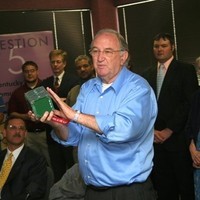How a soda can became a satellite simulator
- cansatkenya 254
- Jun 13
- 2 min read
by Lynne Wonder Kariuki.

CanSat is a new term on many people's tongues and has probably been introduced to you by your friend or your child, or maybe you have seen the word as you scrolled down your LinkedIn page. It is simply explained as a miniature version of a satellite that can fit in a can and is launched either by a drone, parachute, or rocket. But where did this idea even come from? How does someone come up with their own satellite that collects data, sends signals, and executes a mini space mission? Let’s dive into how this small idea turned into a global phenomenon.
Around the late 90s, Prof. Bob Twiggs from Stanford University was looking for an affordable, hands-on way to teach students how to build, operate, and launch a satellite. Knowing that launching a full satellite was too costly and time-consuming, he discarded that thought and took an alternative path.
“What if we could give students the experience of designing and building a satellite, but keep it small and cheap enough to launch it from a rocket or balloon?”
At the USSS (University Space Systems Symposium), he presented the CanSat project. An experimental launch of CanSat using the amateur model rocket ARLISS was suggested. He proposed that the launch be held in Black Rock Desert in Nevada, USA, every year. The rocket was to be launched 2 or 3 km up into the atmosphere. The concept later took off in the early 2000s in the United States, with educators having a technique of providing a hands-on simulated satellite design with the goal of keeping it affordable, realistic, and engaging for their students. With the support of the American Astronautical Society (AAS) and NASA, the first CanSat competition challenged university and high school students to design and build functional mini-satellites. Eventually, CanSat became a permanent fixture in aerospace education.
After its success in the US, it spread across the globe, with the European Space Agency (ESA) launching its own CanSat competition in 2010. Japanese universities also quickly adopted CanSat in their curricula and even influenced the creation of CubeSats, a mini-satellite that can be launched into space. Today, the idea of CanSats is everywhere globally, with even African countries like Ghana and Egypt executing the CanSat program. CanSats are now teaching thousands of students how to build and launch their first satellite. Isn’t that magical?

CanSat Kenya is now joining the initiative to equip and educate students in Kenya to build the capacity of our future systems engineers, payload engineers, and mission scientists. CanSat Kenya sees the future of space development not only in Kenya but in Africa as a continent where satellites will be made by Africans for Africans, aligning with the 2063 Agenda by the African Union.
What began as a simple yet brilliant idea to bring space closer to students has evolved into a global movement shaping the next generation of space engineers, innovators, and scientists. CanSats are stepping stones toward building a self-reliant, space-savvy generation capable of solving real-world problems with technology in Kenya and Africa. CanSats may just be the small sparks lighting the way to Africa’s giant leap into the stars.


Comments